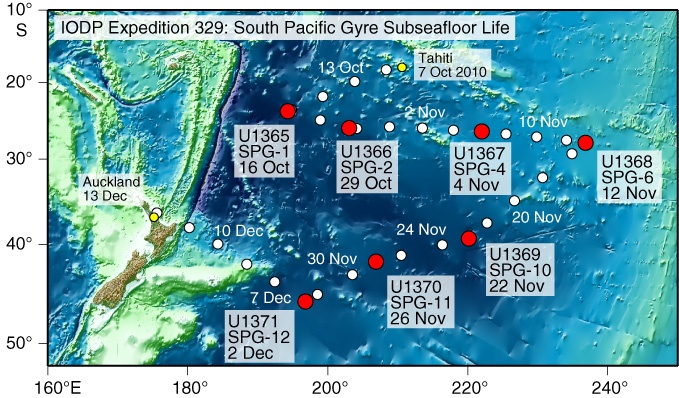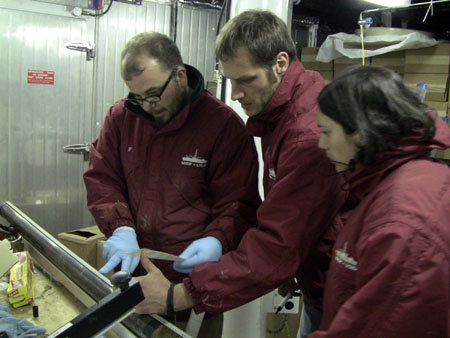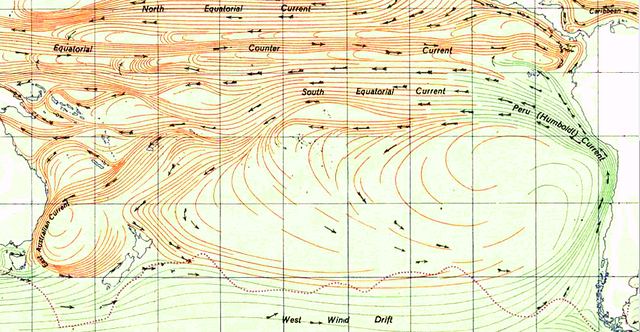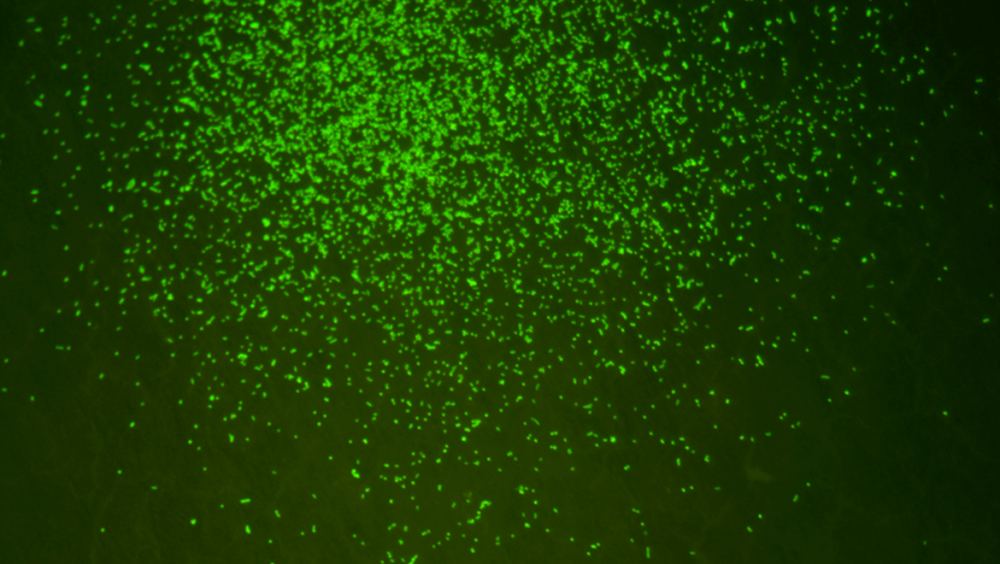At the bottom of the ocean in the South Pacific Gyre, there’s a sediment layer that is among the most nutrient-starved environments on Earth. Because of conditions in that area, there’s almost no “marine snow”—the shower of organic debris common in the ocean—that falls to the ocean floor. Without all that organic debris falling to the floor, there’s a severe lack of nutrients there, and that makes this one of the least hospitable places on Earth.
A team of researchers took sediment samples from that area, and extracted 101.5 million year old microbes. When they “fed” those microbes, they sprang back to life.
The results are expanding our knowledge of microbial life and how long it can be dormant when conditions force it to be.
The ocean can be similar to a forest. In a forest, leaves and debris accumulate on the forest floor, providing a rich feeding ground for microbes and other creatures. In the ocean it’s not leaves, but dead plants, animals, and other material near the ocean’s surface that die and drift to the ocean floor. That marine snow material forms a layer of nutrient-rich ooze that can be several meters thick. It’s how energy moves from the well-lit surface of the oceans to the dark depths.
![Marine snow is the shower of organic material that falls from the sunlit surface regions of the ocean down to the dark depths. Image Credit: By NOAA National Ocean Service - Extracted from this Commons image(see [1]), Public Domain, https://commons.wikimedia.org/w/index.php?curid=86227762](https://www.universetoday.com/wp-content/uploads/2020/08/Marine_snow.jpg)
The NOAA (National Oceanic and Atmospheric Administration) says that about 75% of the ocean floor is covered in this ooze, and it’s very thick in some places. They also say that it can grow by as much as six meters every million years. But in this area, it accumulates only 1 to 2 meters per every million years. Because it accumulates so slowly here, ancient layers aren’t buried as deeply, and are more accessible. It’s still not easy, because some of the samples were taken in water that’s over 5 km (3.1 miles) deep.
In this research, the team gathered samples from oxygen-poor ooze that’s about 101.5 million years old. Then in laboratory conditions, they exposed the microbes to nutrients and oxygen. They sprang back to life, and got busy doing what microbes do: feeding and multiplying.
“They kept their lives for as long as 100 million years.”
Yuki Morono, Lead Author, JAMSTEC
The results of this research are presented in a new paper titled “Aerobic microbial life persists in oxic marine sediment as old as 101.5 million years.” Lead author is Yuki Morono, a geomicrobiologist from the Japan Agency for Marine-Earth Science and Technology. The paper is published in the journal Nature Communications.
“Our main question was whether life can exist at such a very nutrient-limited environment,” lead author Morono said. “We were tackling how low the microbes can sustain their life in almost an absence of their food.”
The sediment samples were gathered in 2010 as part of the Integrated Ocean Discovery Program (IODP) Expedition 329. These samples are the oldest marine samples ever studied, and they were handled in a lab with strict biosafety rules in place. In the lab, they were incubated and fed carbon and nitrogen substrates. The carbon and nitrogen were isotope-labelled, so that consumption could be tracked with nanometer-scale secondary ion mass spectrometry (NanoSIMS).

After 68 days, the populations had increased by four orders of magnitude, a result that stunned the researchers. And over 99% of the microbes in their sample sprung back to life. This is a shocking result: after about 100 million years in a nutrient-limited environment, the large majority of the sample was successfully revivified.
“One of the surprising stuff is that up to 99.1% of the microbes could retain their activity to incorporate added substrate,” Morono said, “meaning that they were alive. They kept their lives for as long as 100 million years.”
There were two types of microbes in the sediment: anaerobic and aerobic. While the aerobic microbes sprang readily back to life, the anaerobic did not. Only minimal numbers of anaerobic microbes were revived.
In their paper the authors say “Our results suggest that microbial communities widely distributed in organic-poor abyssal sediment consist mainly of aerobes that retain their metabolic potential under extremely low-energy conditions for up to 101.5?Ma.”
The researchers aren’t clear on how exactly these populations were able to persist in the low energy sediment for so long. The microbes may have persisted in a kind of “suspended animation,” or it’s possible that they did divide occasionally. So they still don’t know how different types of organisms in this situation can survive in a depressed metabolic state without dividing.

It’s well-known that spores can survive for long periods of time in inhospitable environments. But they’re specialized, long-term survival structures, so specialized they may even be able to survive in space. But in this study, a large fraction of the recovered microbes were not spore-forming, and they still survived.
The sediment is not anoxic, which adds another wrinkle to this work. Oxygen has a degrading effect, so the fact that these organisms survived in the presence of oxygen for such vast geological time scales is impressive. However, researchers don’t know how widely and evenly the oxygen is spread, so it’s possible that there are regions or small areas of very low oxygen content that enhanced the microbes’ survival.
But still, the conclusion is clear. As the authors write, the results “… collectively suggest that microbial communities in oxic subseafloor sediment persist in metabolically active form for at least 101.5 million years.”

In one small, tangential way—though it might be more apparent to microbiologists than the rest of us—the results are kind of disappointing. As the authors explain in their paper, “A cell must metabolize a certain amount of carbon relative to its own biomass before it can double its size, divide or even sustain a metabolically active state.” So these microbes require carbon for food. But their carbon still had to come from the surface. Researchers wonder if one day they’ll find a sedimentary microbe that doesn’t rely on the surface for its food. It’s a sort of Holy Grail in microbiology. If one were ever found, it would change our understanding of how life on Earth works, and where and how we might find life on other planets or moons.
But that’s not really a drawback. This study is again expanding our understanding of Earth’s biosphere, and how resilient it might be. To find ancient life dormant at the bottom of the most unproductive part of the world’s oceans, and to bring it back to life, is very impressive.
So now we know that microbial life can survive in low-energy, low-nutrient environments for over 100 million years. But we still don’t know what the limit is. Can it survive even longer? 200 million years? 300 million?
Who knows.
More:
- Research Paper: Aerobic microbial life persists in oxic marine sediment as old as 101.5 million years
- Wikipedia: South Pacific Gyre
- Universe Today: Europa Life: Could ‘Extreme Shrimp’ Point To Microbes On That Moon?

